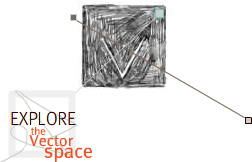Cultivating Pasadena
From Roses to Redevelopment
Editor's Introduction
Cultivating Pasadena began life as a public exhibit at The Pasadena Museum of California Art, expanding multimedia into several tactile, sensory and spatial dimensions via the contours of immersive installation. That version of the project generated a lively response, igniting as it did countless reflections and narratives from museum visitors about their own recollections of the history and development of the city of Pasadena. Portions of the project have been extended indefinitely at the museum and, as such, Cultivating Pasadena maps important new directions for the public humanities, illustrating timely transit routes between scholarly considerations of historiography, memory, and the database and public engagements with those same terrains. We've here excerpted one section of the DVD-ROM that was produced following the museum installation, one focused on transportation in Pasadena's development, an appropriate selection given our theme of "mobility."
"Transportation" intersects with issues of mobility in some fairly obvious ways, particularly given the status of Southern California as a region that "came of age" with the automobile. But Cultivating Pasadena tracks mobility along other, less literal, trajectories as well, particularly in its brilliant use of "rephotography," charting both the mobility of the city across time and the mobility of memory and pleasure, especially as these are scaffolded by the work of the image. In courting speculation about the space between the "before" and "after" images, the project invites the user to imagine other Pasadenas and other histories, including histories of loss and displacement.
Labyrinth Director, Marsha Kinder, describes one subset of the collective's work as "database documentaries," inventive multimedia projects that create a hybrid space where theory and practice collide. Drawing from cinematic language, they push these grammars toward new intermedial potential, crafting project after project that beautifully blend form and content, technology and theory. In many ways, the pioneering effort of the Labyrinth Project helped to create the space from which Vectors might emerge, and we are pleased to be able to present this sample of their work. It raised for us interesting questions about the status of the "excerpt" in the digital age, for selecting a portion of a digital project for reproduction is not the same as publishing a chapter of a book. Nonetheless, much as a book chapter functions as a lure for the larger project, we hope that this selection from Cultivating Pasadena encourages you to learn more about the Labyrinth Project.



